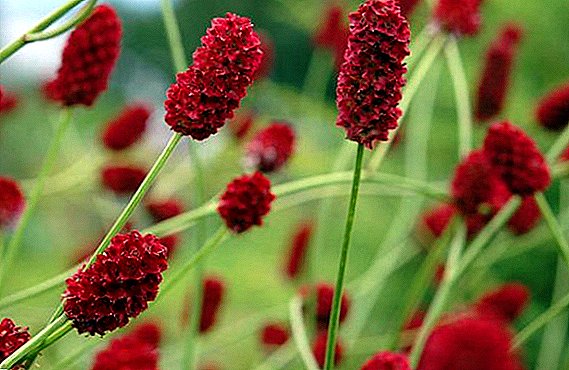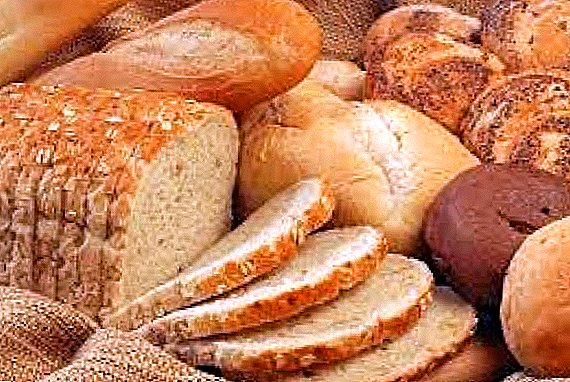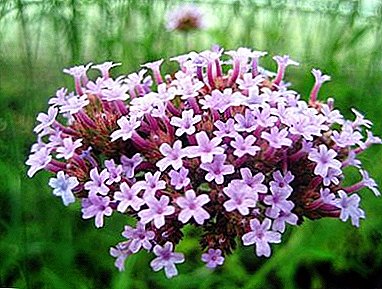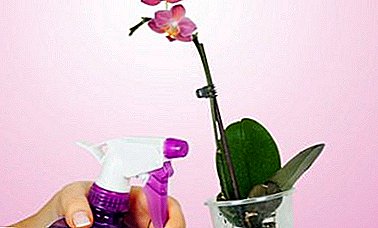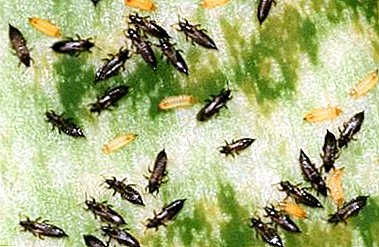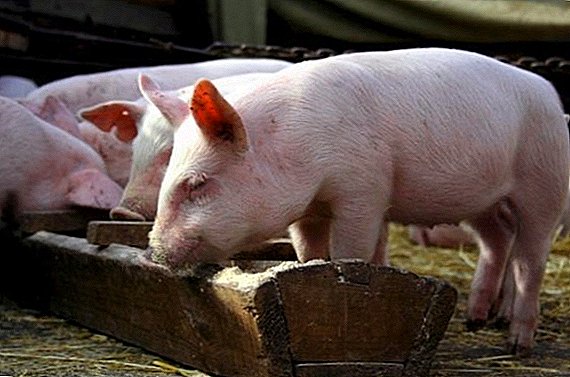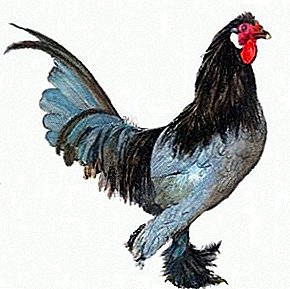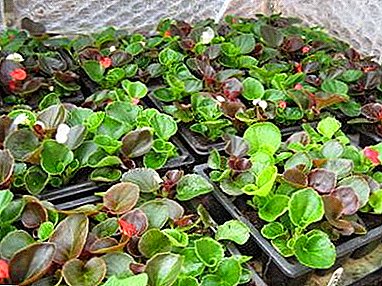
Begonia, which has an unusual color and shape of leaves, delicate and original flowers, always stands out among the plants.
It serves as a real decoration of the apartment, balcony or flower bed. In order to populate the window sill with beautiful begonias, one can propagate the culture with a cutting, healthy tuber or leaf fragment.
But if there was a desire to create a real flower garden on the balcony or near the house, then many copies will be needed. In this case, it is better to resort to the breeding of begonias with seeds. How to do it correctly learn in our article.
Plant propagation methods
Florists use several breeding methods for begonias:
- Cuttings.
- Cut a small stem length of 10 cm, containing 2-3 pairs of leaves.
- The stalk is planted in the ground under a plastic cup or jar.
- A month later, young leaves appear on the plant, indicating rooting of the begonia.
- Sheets.
This method is used for begonias with creeping stem.
- Healthy sheets are cut in the middle of the vein to the edges.
- These blanks spread on wet sand and covered with plastic wrap.
- After about 3 months, the begonia is ready for transplantation under normal conditions.
 Bulb division.
Bulb division. This breeding method is suitable for bush varieties (for example, everglowing begonia).
- Plant out of the pot, shake off the ground.
- Using a knife, the rhizome is cut into several parts, each of which must have a germ or a bud.
- Sections sprinkled with coal.
- The resulting plants are planted in new pots.
- Seeds.
This is the most time-consuming method of breeding culture. It is used only for two types of flowers: everglowing begonia, decorative flowering.
Growing from seed
Self procurement of raw materials for planting
Begonia seeds can be obtained independently. But the matter is very troublesome, because the plant produces very little planting material. The seeds themselves are small, resemble sand grains. They appear in the seed boxes. To collect a decent "harvest" of planting material, you need to remember a few recommendations:
- Artificial pollination. During the flowering of begonias (July-August) with a brush you need to gently transfer the pollen to the stigma of the flower. This procedure is repeated for 2-3 days to increase the chances of successful pollination.
- Collection of raw materials. After pollination on begonias, seed boxes will form. After 45-60 days, they will begin to dry out and turn yellow. At this time they need to collect.
- Drying seeds. Collected boxes spread on paper and left to dry. After 1-2 weeks, they completely dry out and crack.
Bolls should not be overripe. When dried, they crack easily. Collect the seeds in this case will not work.
Buy - where, at what price?
If the process of self-obtaining seed fund causes difficulties, you can purchase planting material in the store. The price of one sachet (it contains 4-10 seeds) is on average 30-100 rubles, depending on the type of plant.
The store will offer 2 types of seeds:
- Granular The seeds are in a special shell consisting of a mixture of fertilizers. This planting material is clearly visible to the eye, it is easier to plant in the ground. But it germinates a little longer, although germination is much higher.
- Ordinary. Small seeds. This raw material is no different from the one that is grown independently.
Important! When buying should pay attention to the date of collection of raw materials. The shelf life of planting material is 5 years. But the highest germination in seeds that are not more than 1 year old. With each subsequent year, the chances of obtaining strong plants are reduced.
A photo
In the photo you can see how the seeds look like begonias:




How to plant?
Despite the laboriousness of planting seeds, this method of reproduction allows you to get strong, healthy and beautiful plants. But for this you need to take into account several important points.
The right time
To begonia bloomed in May, the seeds need to be planted in late December - early January. But for such early plants, additional lighting is required. Lack of light will make begonias painful and frail.
Flower growers believe that the optimal period for planting seeds is mid-February. In this case, the plants do not need additional light sources. But they will delight in their flowering not earlier than June-July.
Pot selection
Before you start planting seeds, you need to choose the "right" container for future plants. Begonia comfortably develops in compact and shallow pots. For planting fit such containers:
- containers for growing seedlings;
- muffins baking tins;
- trays with low sides;
- shallow boxes.
Soil preparation
Begonia prefers neutral or slightly acidic soil. The soil can be purchased at the store or cook yourself.
Substrate Manufacturing Algorithm:
- Sand (1 part), peat (1 hour) and leaf soil (2 hours) are thoroughly mixed.
- To get rid of lumps, the resulting soil is sieved through a sieve.
- Then the soil is disinfected by roasting the mixture in the oven.
Instead of ground substrate, you can use peat tablets. They do not require any training.
If the choice fell on peat tablets, then in the future there will be a need to constantly monitor the level of soil moisture. This soil dries very quickly. If you do not moisten it in a timely manner, the sprouts may die.
Sowing
The landing algorithm includes the following steps:
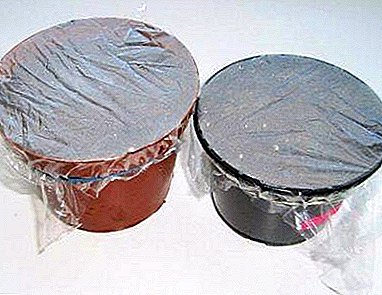 In the selected container pour the finished soil.
In the selected container pour the finished soil.- Moisturize the soil.
- Seeds are sown on the ground surface. For convenience, you can use a sheet of paper. It is folded in half, and seed is poured inside. Light tapping with a needle on this design will ensure minimal seed loss.
- From above the planting material does not fall asleep.
- Planted seeds are moistened with a spray bottle.
- Capacities are covered with glass or light transmitting film.
If peat tablets are used, the seed planting algorithm consists of the following steps:
- Tablets put in the selected container. It is best to use seedlings in this case. In each cell down 1 tablet.
- Peaty soil is thoroughly moistened.
- On top of the softened tablet put one seed.
- With the help of a spray watered crops.
- Capacity covered with a transparent film.
Care for the flower at home
Begonia needs to create the following conditions:
- Temperature mode. Immediately after planting, containers with seeds are transferred to a warm place, protected from drafts. The optimum temperature varies within + 23 ° С - + 25 ° С. Later, when shoots appear and the glass can be removed, the temperature can drop to + 18 ° С - + 20 ° С.
- Lighting. As soon as shoots appear, it is necessary to immediately take care of the lighting. Begonia needs a 12-hour light day. If environmental conditions do not meet these requirements, then additionally illuminate with fluorescent lamps.
- Watering. Watered the seeds with warm settled water (for 1-2 days). Moisturize the soil in small portions and only with a sprayer. If the planting was carried out in peat tablets, then moistening is carried out through the pallet.
- Gradual hardening. The first shoots of begonias will begin to appear at about 10-14 days. After 5-7 days, you can begin hardening plants. To do this, remove the film or glass from the container once a day for 10-15 minutes. Gradually, the airing time of the begonias increases. This is how the seedlings are accustomed to normal room conditions.
- Transplanting plants. When young plants will have two true leaves, carry out the first pick. The composition of the soil remains the same. Such plants still require greenhouse conditions.
The second transplant is carried out 1 month after the first pick. Now add a little humus to the ground. And after planting, after about 10-14 days, the seedlings are fertilized with complex fertilizers.
A third transplant is performed if the plant is planted outside. Begonia is transplanted to the open ground only when the outside temperature is + 18 ° C.
Important! Despite the love of light, begonia completely does not tolerate direct sunlight. They can leave burns on a tender plant or completely destroy it.
Planting seed begonias is a rather difficult process. But the result is worth it. Beautiful begonia will create a special comfort in the house, on the balcony or in the yard. But the esotericists are sure that this particular flower is able to bring peace, love and prosperity to the house.
The video tells about the secrets and features of begonia care at home:


 Bulb division.
Bulb division.  In the selected container pour the finished soil.
In the selected container pour the finished soil.
